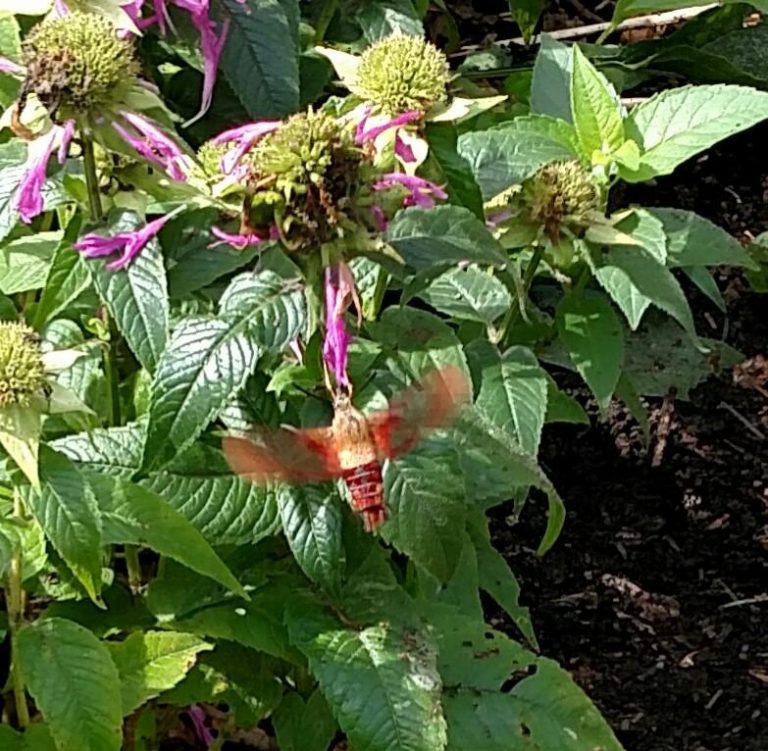The Pollinator Garden is located in front of the Knippenberg Educational Greenhouse, just as you enter Laurelwood Arboretum from Pines Lake Drive W. The purpose of the garden is provide a diversity of native plant material to provide food and shelter for pollinators. Pollinators are insects and other animals that pollinate our food crops and wildflowers. Pollinators include creatures like bees, flies, beetles, butterflies, bats and birds. Our herbaceous plants include tubular flowers in the mint family that hummingbirds love (sage and beebalm), small flowers that form an umbrella shape in the carrot family that attract black swallowtail butterflies, beetles, moths and bees (sea holly), and star-like composite flowers that attract honeybees (daisies, coneflowers and goldenrod). The plants are in full sun for at least six hours per day. Fertilizer use is limited and pesticides are not used.
We save garden clean-up until spring since pollinators may overwinter in leaf litter. Seedheads are allowed to remain over the winter and contribute to the plant’s continuity by reseeding, especially coneflowers, and they provide food for several songbirds.
The Pollinator Garden is located in front of the Knippenberg Educational Greenhouse, just as you enter Laurelwood Arboretum from Pines Lake Drive W. The purpose of the garden is provide a diversity of native plant material to provide food and shelter for pollinators.
Pollinators are insects and other animals that pollinate our food crops and wildflowers. Pollinators include creatures like bees, flies, beetles, butterflies, bats and birds. Our herbaceous plants include tubular flowers in the mint family that hummingbirds love (sage and beebalm), small flowers that form an umbrella shape in the carrot family that attract black swallowtail butterflies, beetles, moths and bees (sea holly), and star-like composite flowers that attract honeybees (daisies, coneflowers and goldenrod).
The plants are in full sun for at least six hours per day. Fertilizer use is limited and pesticides are not used. We save garden clean-up until spring since pollinators may overwinter in leaf litter. Seedheads are allowed to remain over the winter and contribute to the plant’s continuity by reseeding, especially coneflowers, and they provide food for several songbirds.
Butterfly larvae (caterpillars) need host plants to eat. Many butterfly larvae can only feed on one or two specific host plants. For instance, monarch caterpillars only eat milkweed. Monarch butterfly adults need nectar as a food and energy source as they prepare to migrate through North America in autumn. Some good nectar-producing autumn-flowering plants are Joe Pye weed, goldenrod, asters and blazing star. We are proud to be a Monarch Waystation certified by the University of Kansas because the site provides milkweeds, nectar sources and shelter to sustain monarch butterflies as they migrate through North America.
Click here for the Pollinator Garden Brochure.
Click here to learn more about Pollinators Habitats and Plants.
Butterfly larvae (caterpillars) need host plants to eat. Many butterfly larvae can only feed on one or two specific host plants. For instance, monarch caterpillars only eat milkweed.
Monarch butterfly adults need nectar as a food and energy source as they prepare to migrate through North America in autumn. Some good nectar-producing autumn-flowering plants are Joe Pye weed, goldenrod, asters and blazing star. We are proud to be a Monarch Waystation certified by the University of Kansas because the site provides milkweeds, nectar sources and shelter to sustain monarch butterflies as they migrate through North America.


